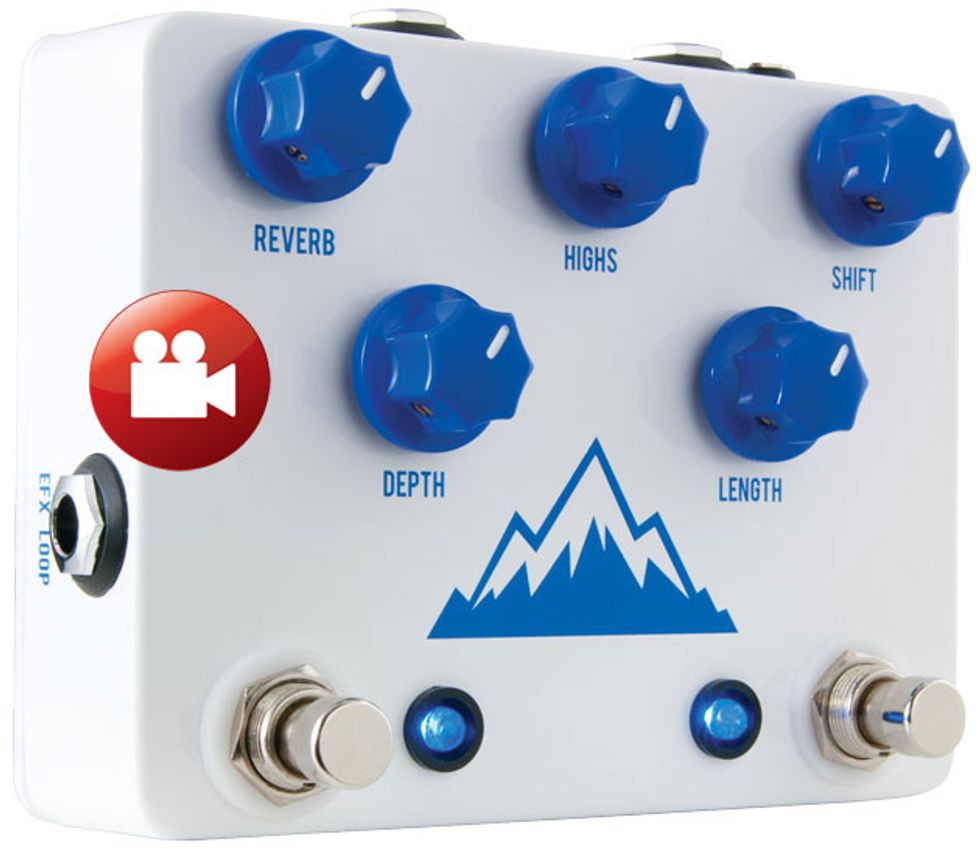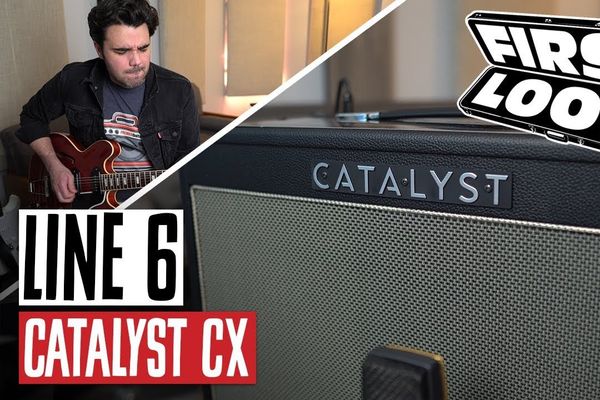A high-quality, dual-mode digital reverb with smooth sounds and simple functionality.

Over the last half-decade the reverb pedal market has bloomed—exploded even—with the abundance of a French garden in spring. Whether you’re a traditionalist trying to nail the sound of spring reverb in a box (see our “Spring-Reverb” pedal review roundup in March 2015 https://www.premierguitar.com/articles/22107-spring-reverb-pedal-review-roundup) or an ambient seeker sonically approximating the space of light years, there’s probably a pedal that will do your bidding.
JHS’s Alpine isn’t the most expansively ambient reverb, nor does it do the most dead-on spring emulations. What it does provide, often brilliantly, is a practical and musical “in-between” reverb that unites spring reverb’s electromechanical splashiness with digital’s expansiveness. Its dual-mode “shift” functionality lets you switch between extreme and mellow reverb levels, and a simple effects loop makes it easy to expand the pedal’s sonic range.
Sourced From The Clouds
The heart of the Alpine is derived from Sky Pedal’s Cloud 9 reverb—a design that Sky Pedal founder Jim Coleman made available to JHS when he left the pedal business. JHS’s design tweaks aren’t numerous, but they enhance the functionality, especially in the case of the new depth control, which modifies the reverb’s spaciousness. The other significant addition is an effect loop, which works via a ¼" TRS splitter cable. The loop is a simple way to add dimension and texture to the reverb without affecting your dry signal. Better still, it can be assigned to the shift switch, which we’ll discuss in a minute.
The rest of the controls are carryovers from the original Cloud 9. A reverb knob functions as a wet/dry control. A highs knob controls the high-pass filter. A length control sets decay time. Meanwhile, a fourth control—the shift knob—acts as a sort of simple preset control. It’s essentially a second reverb-level knob assigned to the right footswitch, letting you switch between drastically different reverb levels on the fly. Additionally, there’s an internal switch that allows you to assign the effect loop to the shift switch exclusively, enabling even greater differentiation between the two reverb sounds.
The Alpine is a well-built unit. The PC board is tidy and organized so that you can extract a faulty switch or AC jack without disassembling the entire unit or removing the board.
Up In the Thin Air
There’s something inherently agreeable about the Alpine’s voice. When the wet/dry mix is 50/50 or less, the reverberations possess an analog-like smoothness that could pass for amp or tank reverb in a band setting or studio mix. Wet/dry settings above noon betray traces of digital artifacts akin to soft repeats on a digital delay, especially when the depth, length, and high controls are in the upper third of their ranges. That said, the Alpine sounds less coldly “digital” than a number of other well-regarded digital reverbs around our studio.
Ratings
Pros:
Soft, organic-sounding reverb. Simple but effective mode switching. Effect loop lets you tweak the reverb without altering the dry signal.
Cons:
Expensive.
Tones:
Ease of Use:
Build/Design:
Value:
Street:
$249
JHS Pedals Alpine
jhspedals.com
If you like long, airy reverb tails, your best bet is to keep the wet/dry mix around noon and get daring with the repeats, highs, and depth. Sounds at these settings are the Alpine’s forte, straddling a cool line between the metallic liveliness of a reverb tank and the airy, harmonically even ambience of a good digital reverb. The pedal shines onstage at such settings, providing much atmosphere without getting overbearing.
The shift control is a potential asset when playing live. It’s not a preset in the sense that it recalls an entire group of settings—it only affects the reverb level. But this near-dummy-proof design is easy to manage in the heat of a performance, and it can create radical textures and dramatic moments when used creatively.
Seeking the most extreme shift settings, I tinkered with the ringing oscillation obtained with highs, length, and depth at high settings. At lower wet/dry mix levels, these tones have a pretty, not-too-sci-fi ambience. They create a beautiful wash beneath arpeggios and slow-burn leads, though the sounds also work with dubby reggae, snappy funk rhythms, and chugging shoegaze strumming. With the shift switch set to a wet reverb mix, the self-oscillating effect can provide killer punctuation for a solo or pepper a jam interlude.
The Verdict
In a reverb stompbox market awash with extreme variations on the effect, the Alpine focuses on the basics—and that’s a good thing. Players that need those extreme textures probably won’t find a lot to love here, but those who favor a mellow reverb approach—or dabble in shoegaze, surf, or rockabilly—will appreciate the Alpine’s lovely, soft-contoured echoes, the snappiness of its useful high-pass filter, and the shift switch’s ability to add a kick to a solo. Meanwhile, those who need their reverb to go further out can use Alpine’s effect loop without altering the dry signal.
One sticking point is price: $249 is a lot for a digital reverb without true presets, modulation, dead-on spring emulations, or other options for deep ambient textures. On the other hand, gigging guitarists are likely to appreciate the Alpine’s smooth sound, simple yet expressive mode switching, and overall high quality.
Watch the Review Demo:
